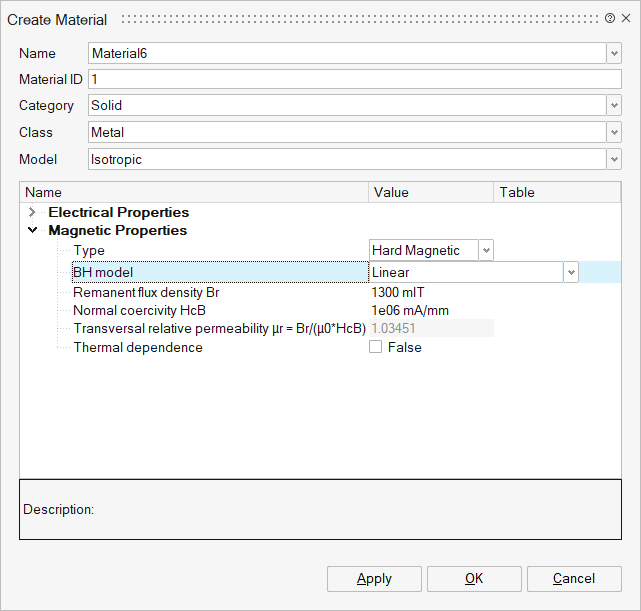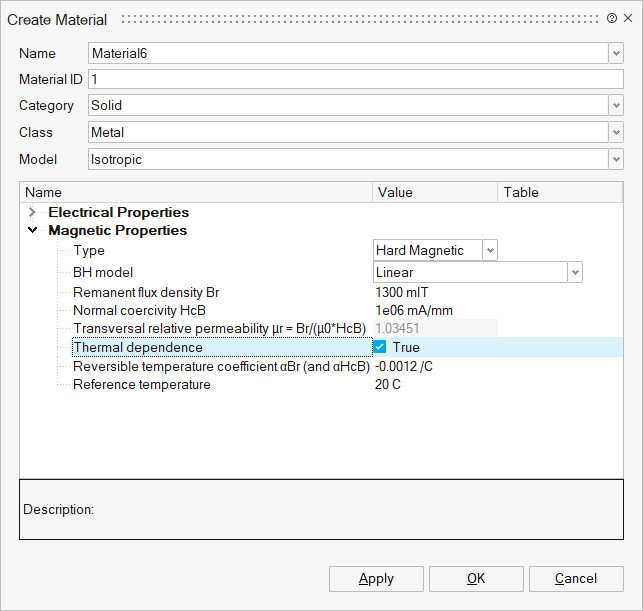B(H) law: Linear hard magnetic material
Presentation
This model (Linear hard magnetic described by HcB and Br) defines a linear B(H) dependence.
Linearity is considered in the direction of magnetization, as well as in the transversal directions, but the remanent flux density Br is only applied in the direction of magnetization. In fact, this magnet model is noted as unidirectional because the mathematical model and the direction of magnetization are dissociated. The mathematical model defines the demagnetization curve, while the direction of magnetization is defined by the orientation in the region.
Mathematical model
The mathematical formula used in Flux for the demagnetization curve is:
where:
- Br is the remanent flux density (T)
- HcB is the normal coercivity (A/m)
In transversal directions one can write:
where μr⊥ is the transversal relative permeability which is
automatically computed through Br and HcB values:
Direction of magnetization
The direction of permanent magnet magnetization is “dissociated” from the model. In the software, it is defined separately.
The various possibilities available to the user are shown in the table below. (The basic plane is a plane XOY.)
|
|
|
|
|
|
| Unidirectional |
Radial positive |
Radial negative |
Orthoradial positive | Orthoradial negative |
CR is the radiality center.
Mathematical model with thermal dependence
This linear hard magnetic model can also account - in the direction of magnetization - for thermal dependence through the reversible temperature coefficient α which applies to both Br and HcB, so that the B(H) slope remains unchanged, i.e. the B(H) characteristics for different temperatures are parallel. As a consequence, there is no thermal dependence in the transversal directions.
The thermal dependence of Br (the same law applies for HcB) can be expressed as:
where:
- Tref is the reference temperature (degrees Celsius °C or Kelvin K)
- Brref is the remanent flux density Br of the magnet at the temperature Tref (T)
- α is a reversible temperature coefficient for the remanent flux density Br and for the normal coercivity HcB (degrees-1)
Here is the Br(T) curve in the figure below:
Dialog Box
| Without Thermal dependence | With Thermal dependence |
|---|---|
 |
 |
- Open a Create Material dialog box in menu
- Choose Solid as Category field
- Choose Metal as Class field
- In Magnetic Properties:
- Choose Hard Magnetic type
- Choose Linear BH model
- Define Remanent flux density Br
- Define Normal coercivity HcB
- Activate Thermal properties and define corresponding
parameters (optional)
- Define Reversible temperature coefficient αBr (and αHcB)
- Define Reference temperature